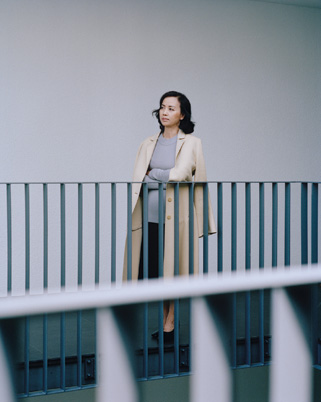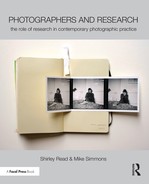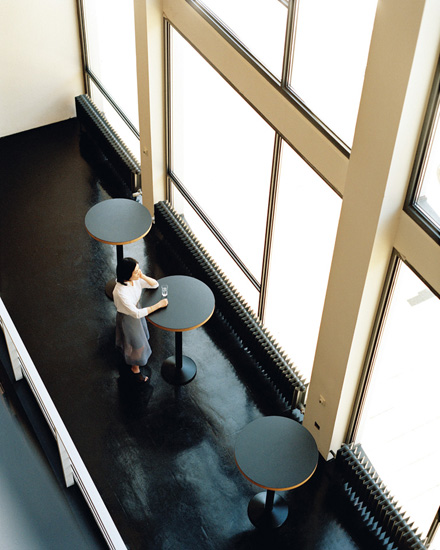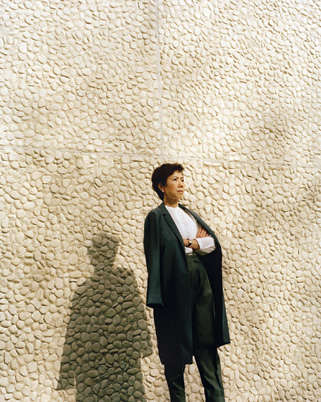Case Study
Thu Thuy Pham
Thu Thuy Pham is a fashion photographer working between London and Berlin. BA—London College of Fashion
I SEE RESEARCH AS A MEANS for exploration of new cultural territories and reflection on my existing perspectives as an image maker. I hope that the two develop in parallel and that, as I explore new social scenarios, my work will develop in range and technique.
Nine Women was the Final Major Project of the BA (Hons) Fashion Photography course at the London College of Fashion.
The brief was to:
create a substantial body of work that evidences the consolidation of specific subject knowledge of fashion image making. Moreover, the lens-based work should be informed by a rigorous process of research, indicating your ability to analyse and synthesise the findings into final outcomes appropriate for your subject specialism.
In the Nine Women project I question whether the subjects of a particular set of prevalent social opinions feel their portrayal is accurate and justified. Interviews with nine middle-aged immigrant Vietnamese women in Berlin explored their experiences of integrating into German society, and also highlighted a fascinating similarity between political tensions along territorial lines in both Germany and Vietnam as a result of communism in both places. During the late 1980s, when Vietnamese immigrants moved to Germany, there was widespread unrest and readjustment on the part of both Germans and Vietnamese.
Nine Women seeks to portray aspirational women questioning their place in a foreign society, whose state of re-identification ran parallel to their own, as they embedded themselves in late twentieth-century Berlin society. The safest social position for these women has historically been one of anonymity yet, as German society has stabilised since reunification, these women have been able to step out of the shadows. By posing solitary Vietnamese women in contemporary western fashion against the backdrop of their adopted homeland, I wanted to remind the viewer of the tensions and alienation that affect the immigrant. This involved a very careful choice of locations to highlight the divide between the two cultures and place the Vietnamese woman in a very western context.
Nine Women was my first piece of staged documentary and a new way of working for me. Identifying myself with the subject’s life experiences pre-shoot meant I could make informed styling and location choices, making the results less hit-and-miss than on other shoots. Getting to know models and subject matter pre-shoot also meant the models were involved in and contributed to the concept, which I think made the images stronger.
Research per se wasn’t new to me when I started college, but my work had often felt quite ‘light’ in message. Adding a personal

From the series Nine Women
© Thu Thuy Pham
element through the juxtaposition of immigrant models and culturally significant German locations has given the work substantial exploratory purpose for me. Working commercially there is a predefined objective. In contrast, exploring elements of society and culture through personal researched projects gives my work and style an opportunity to evolve organically.
To achieve the clarity and honesty I wanted I had to develop different forms of research and production techniques, from brainstorms and bilingual interviews to the selection of camera format and film type.
The research also provided a historical element, informing me of the models’ pasts, and giving me the information to picture them in their present state, while questioning how they will be viewed in the future. I think that undertaking sustained research has taken my work beyond a simply visual approach, opened up new angles for questions and made it possible for me to construct a social message.
Nine Women is a project through which I brought together a community, and I think I have created a stable base for linked projects in future. Now that I have begun to understand the context and history of this social group I am better placed to chart its evolution. From a clarity of execution that comes from intricate pre-planning I hope I will be able to move into a position where I can shoot spontaneously in the present, but in an informed manner, because I understand the significance of what I am capturing and what I am attempting to show.
A major element of Nine Women was to portray the women in a dignified manner and to attempt to outline an issue and open up space for contemplative conversation. I find many attempts at being controversial come across as banal and insincere, so it was important for my project to open up possibilities for a constructive dialogue. Researching how other photographers, such as Jean Mohr or Tobias Zielony working on issues around immigration, have explored peripheral social groups was of great importance to me. Often, I found that photographers represent minority social groups with a rawness that does little to represent the diversity and intricacy of their experiences. I sought to achieve the visual message of repression and struggle through cropping, perspective and composition.
As an immigrant myself, I felt able to focus on highlighting the strength, humility and perseverance evident amongst immigrant groups. This was possible through my insider’s perspective and interviews. Throughout the project I was always open to creative input, whether it was a visual suggestion or an avenue for social exploration. I systematically reviewed my progress to make sure that no aspect of my work misrepresented my subject.
I consistently log my project development in a folder that consists of potential locations, styling, interviews with models, mood boards, Polaroids of models and call-sheets, as well as elements of postproduction such as potential book layouts.
After university I will undoubtedly continue to utilise research as a means of understanding both the subject and target audience. It only takes one element of a visual portrayal to be out of sync and an entire project can lose its credibility. In order to present both a historical portrayal and a picture of how a social group may evolve, I believe it is only through intricately crafted production techniques that a photographer can create a body of work that both documents and educates.

From the series Nine Women
© Thu Thuy Pham
I believe it is important to consistently immerse oneself in personal projects that test visual and production techniques. As a photographer one should have the ability to adapt one’s style to capture the diversity of scenarios that play out across the globe. There is no place for complacency within photography; it can only lead to doing an injustice to the subject matter. A poorly executed project may result in a significant message falling on deaf ears.
Interview by Shirley Read by email


